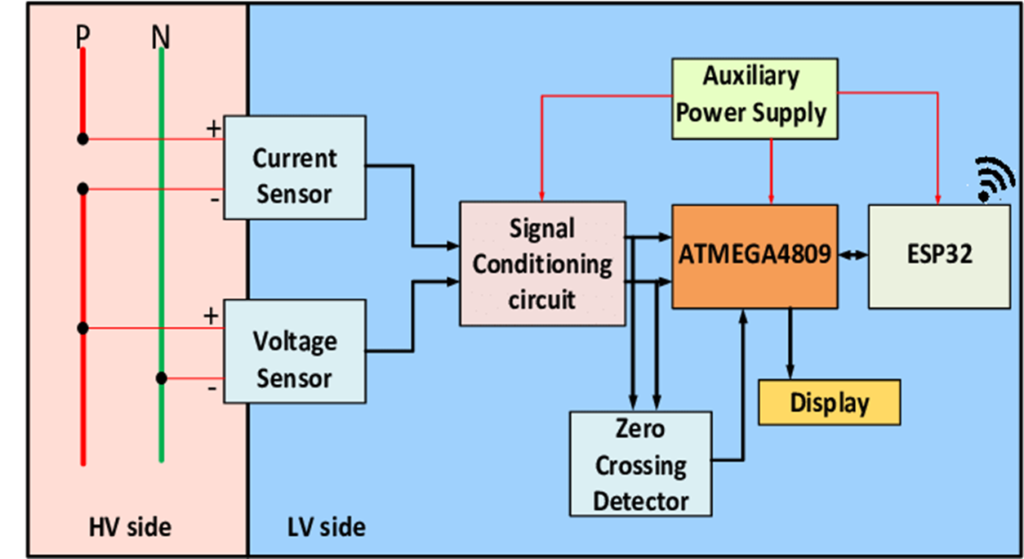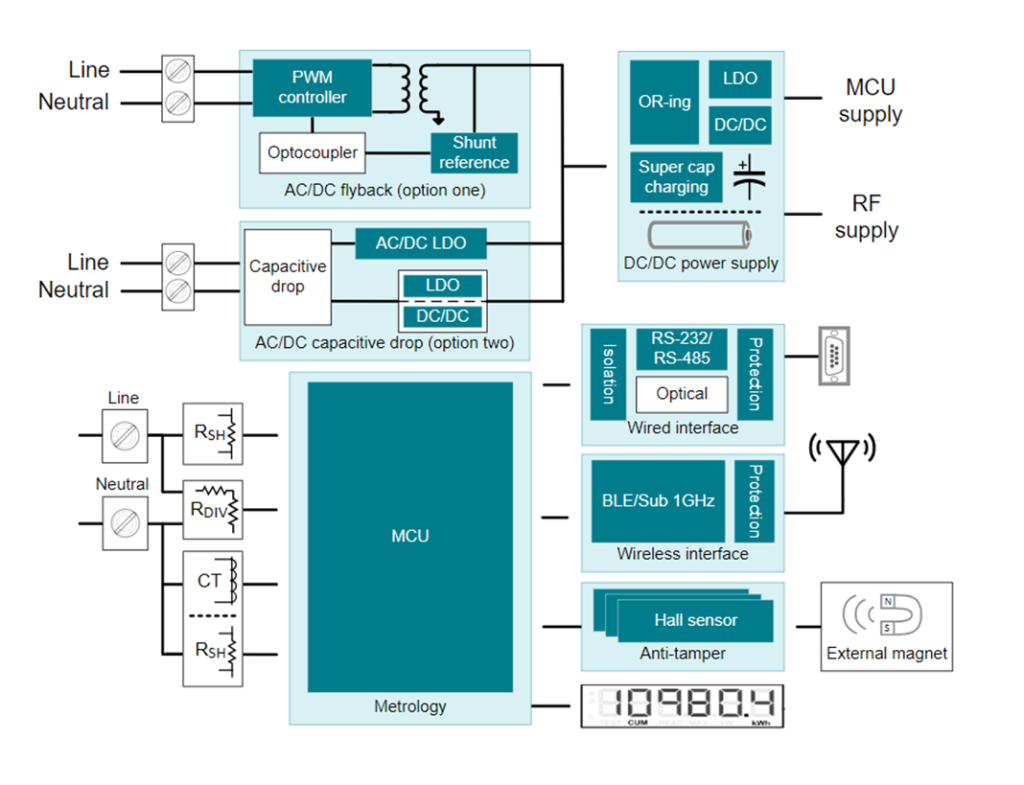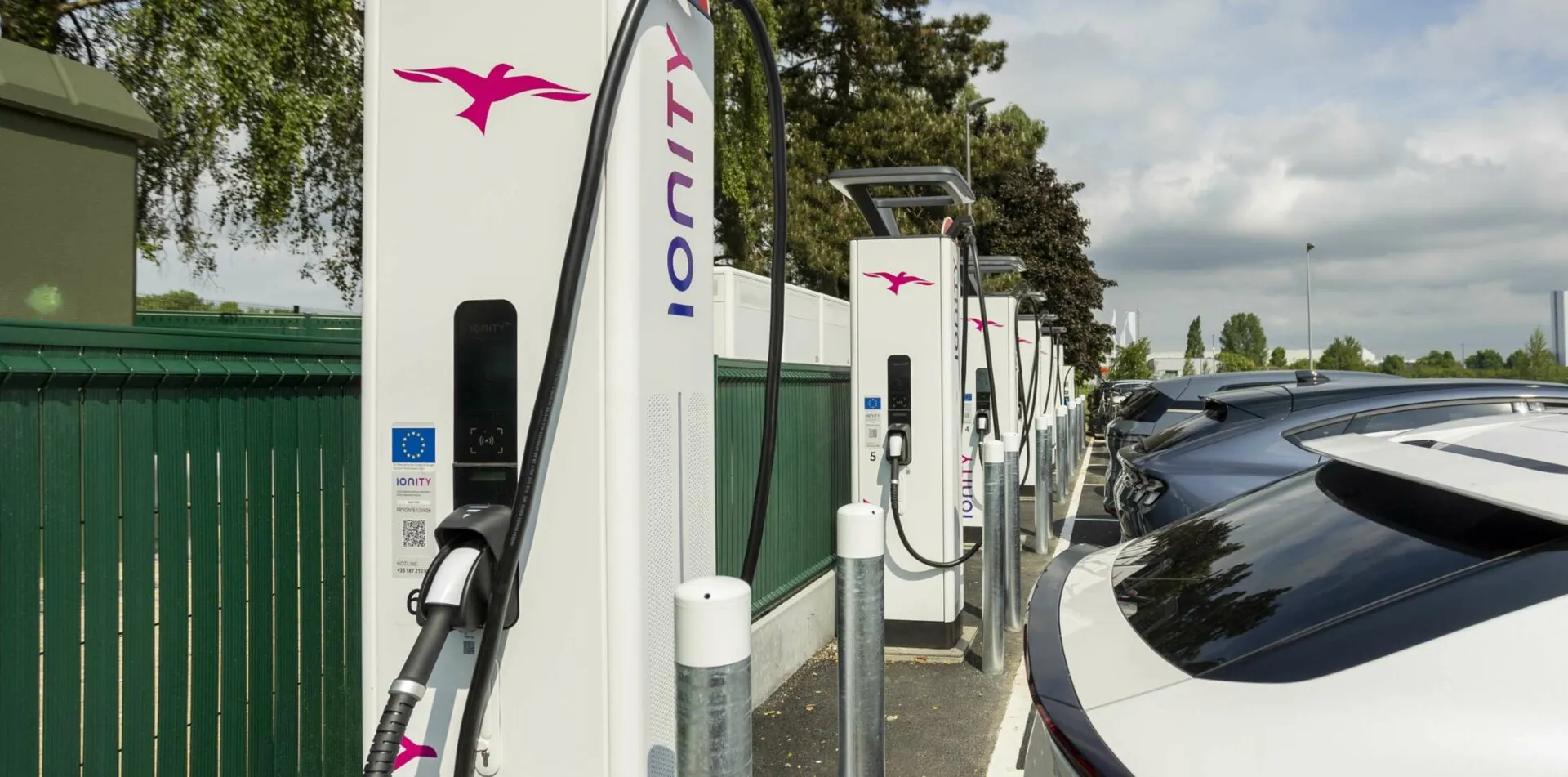Smart Meters and Needs
Smart energy meters as compared to conventional meters provides flexibility in terms of safety, responsive time, storing and reading data remotely, provides wireless communication that enables the feasibility of calculating the overload and underload on grid through a particular area. They are mostly used in the home energy management systems
Smart energy meters are advanced digital devices that measure and record energy consumption in a more sophisticated manner than traditional analog meters. They are commonly used for electricity, gas, or water monitoring. Unlike traditional meters that require manual reading by a utility service person, smart meters automatically collect and transmit data on energy usage.
Key features of smart meters
Remote Reading
Smart meters enable remote reading of energy consumption data. Utility companies can collect this information without sending personnel to physically read the meters, making the process more efficient.
Real-time Monitoring
Smart meters provide real-time information about energy consumption, allowing consumers to monitor and adjust their usage patterns. This helps in promoting energy efficiency and cost savings.
Two-way Communication
Smart meters can communicate with utility companies in a bidirectional manner. This allows utilities to send information to the meter and receive data from it. For example, utilities can remotely disconnect or reconnect services, update tariff information, and detect outages more quickly.
Billing Accuracy
By providing accurate and timely information on energy consumption, smart meters contribute to more precise billing. This reduces the need for estimated bills and helps consumers better understand and manage their energy usage.
Integration with Smart Grids
Smart meters are often part of a larger smart grid infrastructure. The smart grid enables better coordination between energy producers and consumers, optimizing energy distribution, improving reliability, and integrating renewable energy sources more efficiently.
Time-of-Use (TOU) Pricing
Smart meters enable the implementation of time-of-use pricing, where the cost of electricity varies based on the time of day and overall demand. This can encourage consumers to shift their energy usage to off-peak hours, promoting a more balanced and efficient grid.
How smart meter operate and collect data
Smart meters operate by continuously measuring and recording the consumption of electricity, gas, or water in a more advanced and automated way compared to traditional analog meters
Smart energy Meter block diagram

- Low resistance current sensor
- Hall effect sensor
- Current transformer
- Resistive method for voltage sensor
- OPAMP active Amplifier for sensor to ADC integration
- Microcontroller for Reading Analog Data through ADC
- IOT/communication module for storing data in the server
- Fuse/circuit breaker/safety mechanism
- Auxiliary power supply (flyback AC/DC converter)
Smart Energy Block diagram by texas instruments

Measurement and Sensors
Smart meters are equipped with sensors and measurement devices specific to the type of utility being monitored (electricity, gas, or water). For electricity, these meters use sensors to measure the flow of electric current, while gas and water meters use sensors to measure the volume of gas or water passing through.
Data Collection
The meter collects consumption data at regular intervals, often in short time increments, such as every 15 or 30 minutes. The collected data includes information about the amount of energy used, time of usage, and sometimes other relevant details.
Communication Technology
Smart meters are designed with communication modules that allow them to transmit data remotely. Various communication technologies can be used, such as radio frequency (RF), power-line communication (PLC), cellular networks, or wired connections.
Data Transmission
The collected data is transmitted from the smart meter to a central data repository or a data concentrator using the communication technology in place. This can occur through wireless communication, sending data over the existing power lines, or using other communication channels.
Central Data Repository
The transmitted data is received by a central data repository managed by the utility company. This repository stores the consumption data for each individual smart meter, creating a comprehensive record of energy usage for the entire service area.
Remote Access and Management
Utility companies can remotely access the data from smart meters. This eliminates the need for manual meter readings. Remote access also allows utility companies to manage services, analyse consumption patterns, and implement changes or updates to the meter remotely.
Data Analysis and Billing
The collected data is used for various purposes, including accurate billing based on actual consumption rather than estimates. Utility companies can also analyse the data to gain insights into usage patterns, identify potential issues, and optimize their infrastructure.
User Interface
Some smart meters come with a user interface or display that allows consumers to monitor their real-time energy consumption, encouraging energy efficiency and informed decision-making.
Interoperability in Smart Meters
Interoperability in the context of smart meters refers to the ability of different devices and systems to work together seamlessly, enabling data exchange and communication between them. In the context of smart meters, interoperability is crucial for the efficient functioning of the overall energy infrastructure. Here are some key aspects of interoperability related to smart meters:
Standardization
Interoperability is often achieved through the use of industry standards. Standardization ensures that different smart meters and systems adhere to common protocols and specifications. For example, communication protocols such as DLMS/COSEM (Device Language Message Specification/Companion Specification for Energy Metering) or ANSI C12.19 are commonly used for smart meter communication.
Communication Protocols
Smart meters need to communicate with various components of the energy ecosystem, including utility back-end systems, data concentrators, and other smart grid devices. Interoperability is facilitated by adopting standardized communication protocols that allow different devices to exchange data seamlessly.
Data Formats
Standardized data formats ensure that the information collected by smart meters can be easily understood and processed by different systems. Common data formats and structures enable interoperability between smart meters and other elements of the energy infrastructure.
Smart Grid Integration
Smart meters are often part of a broader smart grid infrastructure. Interoperability is essential for the integration of smart meters with other smart grid components, such as sensors, automation devices, and energy management systems.
Plug-and-Play Compatibility
Interoperability is enhanced when smart meters and related devices support plug-and-play compatibility. This means that devices can be easily connected and integrated into the system without requiring extensive configuration.
Open Standards and APIs
Open standards and Application Programming Interfaces (APIs) promote interoperability by providing a common framework for communication and data exchange. Open standards allow different vendors and manufacturers to create compatible devices and systems that can work together seamlessly.
Regulatory Framework
Regulatory bodies may play a role in establishing requirements for interoperability to ensure that utilities and consumers have flexibility in choosing smart metering solutions from different vendors while maintaining compatibility.
Testing and Certification
Testing and certification processes help ensure that smart meters meet specified interoperability standards. This can involve third-party organizations verifying that devices comply with industry requirements.
Smart Energy Meters Regulations in India
Smart Meter National Programme (SMNP)
The Smart Meter National Programme is an initiative by the Government of India to replace conventional electricity meters with smart meters across the country. The program aims to enhance efficiency in billing, reduce electricity theft, and promote energy conservation.
Bureau of Indian Standards (BIS)
The Bureau of Indian Standards is responsible for developing and maintaining standards for various products, including smart meters. BIS specifications for smart meters help ensure that these devices meet certain quality and performance standards.
Regulatory Authorities
The Electricity Act, 2003, and the regulatory authorities such as the Central Electricity Regulatory Commission (CERC) and State Electricity Regulatory Commissions (SERCs) play a role in defining rules and regulations related to smart meters. These regulations may include guidelines for deployment, operation, and integration of smart meters into the existing electricity distribution infrastructure.
State Policies
Individual states in India may have their own policies and regulations regarding the deployment of smart meters. State Electricity Regulatory Commissions often play a role in formulating and implementing these policies.
Tariff Regulations
Tariff structures related to smart meters, including time-of-use (TOU) pricing, may be defined by regulatory bodies. TOU pricing encourages consumers to shift their energy usage to off-peak hours.
Privacy and Data Security
Considering the sensitive nature of data collected by smart meters, there may be regulations and guidelines related to privacy and data security. These regulations may include provisions for secure data transmission, storage, and access.
Challenges and Risks
Privacy Concerns
Collection of detailed energy usage data raises privacy concerns. Analysing consumption patterns can reveal personal habits and routines, leading to potential privacy infringements. Regulations and measures need to be in place to protect consumer data and ensure responsible use.
Security Risks
Smart meters are susceptible to cybersecurity threats. Unauthorized access to smart meter data can lead to privacy breaches, tampering with consumption records, or even remote manipulation of meter functionality. Ensuring robust cybersecurity measures, such as encryption and secure communication protocols, is essential to mitigate these risks.
Data Management and Storage
Managing and storing the vast amount of data generated by smart meters can be challenging. Utilities need effective systems to handle data storage, processing, and analysis. Adequate cybersecurity measures are also required to protect the data from unauthorized access and potential breaches.
Interoperability Issues
Interoperability challenges may arise when different smart meters and devices from various manufacturers operate within the same infrastructure. Inconsistent standards and communication protocols can hinder seamless integration. Standardization efforts are crucial to address interoperability challenges and promote a more harmonized deployment of smart meter technologies.
Grid Reliability and Resilience
Smart meters are part of broader smart grid systems. If not properly implemented, they can introduce potential vulnerabilities that may impact the overall reliability and resilience of the grid. Robust testing, monitoring, and planning are necessary to ensure the smart grid’s reliability under various conditions.
Consumer Acceptance and Education
Some consumers may be resistant to the deployment of smart meters due to concerns about privacy, data security, or potential health impacts. Adequate consumer education and communication are essential to address misconceptions, build trust, and encourage acceptance of smart metering technologies.
Costs and Funding
The upfront costs associated with deploying smart meters can be substantial. Utilities and regulatory bodies need to find sustainable funding models to support these investments. Cost-benefit analyses are essential to ensure that the long-term benefits of smart meters outweigh the initial investment.
Regulatory Challenges
Regulatory frameworks may not always keep pace with technological advancements. Delays or uncertainties in regulatory approvals can hinder the timely deployment of smart metering projects. Clear and supportive regulatory frameworks are crucial to providing a stable environment for smart meter initiatives.
Operational Challenges
Utilities may face operational challenges during the transition from traditional meters to smart meters. This includes training personnel, integrating new technologies, and ensuring the smooth operation of the entire metering infrastructure.
Future trends and market requirements
Advanced Metering Infrastructure (AMI)
The integration of smart meters into Advanced Metering Infrastructure (AMI) continues to be a trend. AMI includes the comprehensive network and systems that enable bidirectional communication between utilities and smart meters, facilitating real-time data exchange.
5G Connectivity
The adoption of 5G technology is likely to enhance the communication capabilities of smart meters. High-speed, low-latency 5G networks can support the rapid and reliable transmission of data, contributing to improved smart grid operations.
Edge Computing
Edge computing involves processing data closer to the source (e.g., smart meters), reducing latency and improving efficiency. Utilizing edge computing in conjunction with smart meters can enhance real-time data analysis and decision-making.
Grid Modernization
Smart meters are a key component of grid modernization efforts. The integration of smart grids allows for better management of energy distribution, improved reliability, and the incorporation of renewable energy sources.
Cybersecurity Enhancements
With an increasing number of connected devices, including smart meters, there is a growing emphasis on enhancing cybersecurity measures. Future trends may include the implementation of more advanced encryption, authentication, and intrusion detection technologies.
AI and Machine Learning Integration
The integration of artificial intelligence (AI) and machine learning (ML) into smart meter systems can enable more advanced analytics. Predictive maintenance, anomaly detection, and demand forecasting are some areas where AI and ML can provide valuable insights.
Blockchain for Data Security
Blockchain technology may be explored for securing and managing smart meter data. Blockchain can enhance data integrity, traceability, and security, addressing concerns related to data tampering and unauthorized access.
Customer Engagement and Empowerment
Future smart meter deployments may focus on enhancing customer engagement and empowerment. Providing consumers with real-time information about their energy usage, personalized insights, and energy-saving tips can encourage more sustainable consumption patterns.
Flexible Tariff Structures
Time-of-use pricing and other flexible tariff structures may become more widespread. These structures can incentivize consumers to shift their energy usage to off-peak hours, contributing to grid optimization and load management.
Environmental Sustainability
Increasing emphasis on environmental sustainability may drive the adoption of smart meters as part of broader efforts to reduce carbon emissions. Smart meters can support the integration of renewable energy sources and promote energy efficiency.
Regulatory Support
Continued regulatory support and standardization efforts are crucial for the widespread adoption of smart meters. Clear and consistent regulations can provide a stable environment for utilities and technology providers.
Global Market Expansion
The global market for smart meters is expected to expand, driven by increasing awareness of energy efficiency, regulatory mandates, and the need for modernizing aging utility infrastructures.
In India there are several smart energy meter manufacturers who are working on the latest technology and innovation.



